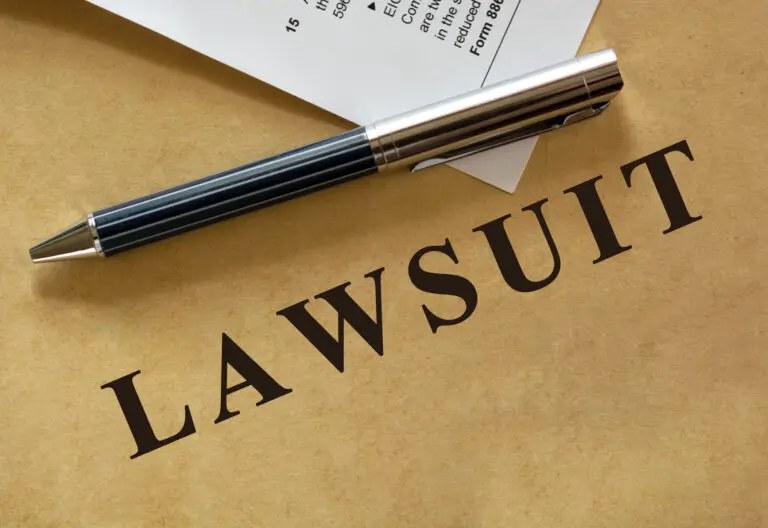En inevitable discovery doctrine stands as a critical exception to the exclusionary rule in United States criminal procedure. This legal principle allows for the admission of evidence obtained through unconstitutional means if the prosecution can demonstrate that the evidence would have been discovered inevitably through lawful methods. The doctrine serves as a counterbalance to the exclusionary rule, which generally prohibits the use of evidence gathered in violation of a defendant’s constitutional rights.
The Supreme Court formally recognized the inevitable discovery exception in the landmark case of Nix v. Williams in 1984. This decision established the framework for applying the doctrine and set forth the rationale behind its implementation. The Court reasoned that if the challenged pruebas would have been obtained regardless of the constitutional violation, excluding it would put the prosecution in a worse position than if no misconduct had occurred. This approach aims to strike a balance between deterring police misconduct and ensuring that the criminal justice system has access to probative evidence.
At its core, the inevitable discovery doctrine requires a hypothetical inquiry into what would have transpired absent the constitutional violation. This speculative nature distinguishes it from other exceptions to the exclusionary rule, such as the independent source doctrine. The latter applies when evidence is actually obtained through lawful means independent of any illegality, whereas inevitable discovery deals with evidence that would have been discovered through lawful means, even though it was initially obtained improperly.
The application of the inevitable discovery exception involves a careful analysis of the specific circumstances surrounding the acquisition of evidence. Courts must consider factors such as the likelihood of discovery, the proximity of the lawful investigation to uncovering the evidence, and the degree of certainty that the evidence would have been found. This assessment often requires courts to engage in counterfactual reasoning, imagining alternative scenarios in which law enforcement acted within constitutional bounds.
One of the key elements in applying the inevitable discovery doctrine is determining the appropriate standard of proof. In Nix v. Williams, the Supreme Court established that the prosecution must prove inevitable discovery by a preponderance of the evidence. This standard requires showing that it is more likely than not that the evidence would have been discovered through lawful means. Some legal scholars and lower courts have debated whether a higher standard, such as clear and convincing evidence, would be more appropriate given the speculative nature of the inquiry.
The inevitable discovery exception has significant implications for Fourth Amendment protections against unreasonable searches and seizures. Critics argue that the doctrine may incentivize law enforcement to conduct illegal searches, knowing that evidence can potentially be admitted under this exception. Proponents, however, contend that the doctrine prevents the exclusionary rule from overreaching and allows for the admission of relevant evidence that would have been discovered regardless of any police misconduct.
One area where the inevitable discovery doctrine frequently arises is in the context of warrantless searches. For instance, if police conduct an illegal search of a vehicle and discover contraband, the evidence might still be admissible if the prosecution can show that a lawful inventory search would have inevitably revealed the same items. This scenario highlights the intersection between inevitable discovery and other established exceptions to the warrant requirement, such as inventory searches.
The application of inevitable discovery to derivative evidence, also known as “fruit of the poisonous tree,” adds another layer of complexity to the doctrine. While the original Nix case dealt with physical evidence (the victim’s body), courts have grappled with how to apply the doctrine to other types of evidence, such as confessions or witness testimony that result from an initial constitutional violation. Some jurisdictions have limited the application of inevitable discovery to physical evidence, while others have extended it to various forms of derivative evidence.
Another important consideration in the application of the inevitable discovery doctrine is the role of active pursuit. Some courts have required that law enforcement be actively pursuing an alternative, lawful line of investigation at the time of the constitutional violation for the exception to apply. This “active pursuit” requirement aims to ensure that the inevitable discovery is not merely a hypothetical possibility but a likely outcome based on ongoing investigative efforts. However, not all jurisdictions have adopted this requirement, leading to a split in how the doctrine is applied across different courts.
The interplay between inevitable discovery and buena fe on the part of law enforcement has also been a subject of debate. In Nix, the Supreme Court explicitly rejected the notion that the prosecution must prove the absence of bad faith to invoke the inevitable discovery exception. This decision was based on the rationale that the deterrent purpose of the exclusionary rule would not be served by suppressing evidence that would have been discovered regardless of the officer’s good or bad faith. However, some state courts have chosen to incorporate a good faith element into their analysis of inevitable discovery claims.
The application of the inevitable discovery doctrine in the context of pruebas digitales presents unique challenges in the modern era. As technology evolves, questions arise about how to apply the doctrine to electronic devices, cloud storage, and other digital platforms. For example, if law enforcement illegally accesses a suspect’s smartphone, can they argue that a subsequent lawful search warrant would have inevitably led to the discovery of the same information? These scenarios require courts to consider the rapidly changing landscape of digital forensics and data recovery techniques.
The inevitable discovery exception also intersects with issues of privacy in an increasingly connected world. As data collection becomes more pervasive, the argument that certain information would have been inevitably discovered through lawful means may become more compelling. This raises concerns about the erosion of privacy protections and the potential for the doctrine to be used to justify expansive surveillance practices.
En el ámbito de international law enforcement cooperation, the inevitable discovery doctrine takes on additional complexity. Different countries may have varying standards for the admissibility of evidence and different approaches to balancing individual rights with law enforcement needs. When evidence is obtained through transnational investigations, questions may arise about which country’s legal standards should apply and how the inevitable discovery doctrine should be interpreted in a global context.
The application of inevitable discovery in delincuencia de cuello blanco cases presents its own set of challenges. In complex financial investigations, the line between lawful and unlawful discovery of evidence can be particularly blurry. For instance, if regulators uncover financial irregularities through an improper audit, can prosecutors argue that routine compliance checks would have inevitably revealed the same information? These scenarios require careful consideration of industry practices, regulatory frameworks, and the specific circumstances of each case.
The inevitable discovery doctrine also plays a role in cases involving national security y counterterrorism. In these high-stakes situations, the balance between protecting individual rights and safeguarding public safety becomes even more delicate. Courts must grapple with how to apply the doctrine when the government argues that classified investigative techniques or intelligence sources would have inevitably led to the discovery of evidence.
Another area where the inevitable discovery doctrine has significant implications is in cases involving Pruebas de ADN. As DNA databases expand and genetic genealogy techniques advance, questions arise about whether certain genetic information would have been inevitably discovered through lawful means, even if it was initially obtained through an unconstitutional search. This intersection of science and law presents novel challenges for courts applying the inevitable discovery exception.
The doctrine of inevitable discovery also interacts with negociación de clemencia y sentencia considerations. The admissibility or exclusion of evidence under this exception can significantly impact a defendant’s decision to plead guilty or go to trial. Moreover, in sentencing proceedings, courts may need to consider whether evidence admitted under the inevitable discovery exception should be given the same weight as evidence obtained through entirely lawful means.
En el contexto de police reform and accountability, the inevitable discovery doctrine has been subject to scrutiny. Critics argue that the exception may undermine efforts to deter police misconduct by providing a loophole for the admission of illegally obtained evidence. Proponents, however, contend that the doctrine strikes a necessary balance and prevents the exclusionary rule from becoming an absolute bar to relevant evidence.
The application of inevitable discovery in cases involving emerging technologies continues to evolve. For example, as autonomous vehicles become more prevalent, questions may arise about how the doctrine applies to data collected by these vehicles. If law enforcement improperly accesses a self-driving car’s data logs, can they argue that the information would have been inevitably discovered through lawful means, such as traffic cameras or GPS records?
The inevitable discovery doctrine also intersects with issues of algorithmic decision-making in law enforcement. As police departments increasingly rely on predictive policing tools and data analytics, courts may need to consider how these technologies impact the application of the doctrine. For instance, if an algorithm predicts criminal activity in a certain area, leading to an illegal search, can prosecutors argue that routine patrols would have inevitably discovered the same evidence?
En el ámbito de ciberdelincuencia investigations, the inevitable discovery doctrine takes on new dimensions. The global nature of the internet and the complexity of digital evidence collection raise questions about how to apply the doctrine when evidence is scattered across multiple jurisdictions or hidden behind layers of encryption. Courts must grapple with whether alternative, lawful investigative techniques would have inevitably uncovered the same digital footprints.
The inevitable discovery exception also plays a role in cases involving undercover operations y confidential informants. If information obtained through an unconstitutional undercover operation leads to the discovery of evidence, prosecutors may argue that ongoing surveillance or informant tips would have inevitably revealed the same information. These scenarios require careful consideration of the specific circumstances and the extent of lawful investigative efforts.
The application of inevitable discovery in cases involving corporate misconduct y regulatory violations presents unique challenges. In complex investigations spanning multiple agencies and jurisdictions, determining what would have been inevitably discovered through lawful means can be particularly difficult. Courts must consider the interplay between various regulatory frameworks, reporting requirements, and investigative techniques.
The inevitable discovery doctrine also intersects with issues of witness testimony y memory. If a witness’s statement is obtained through unconstitutional means, can prosecutors argue that the witness would have inevitably come forward or been discovered through lawful investigative techniques? These scenarios require courts to consider factors such as the passage of time, the reliability of memory, and the likelihood of independent discovery.
En el contexto de border searches y immigration enforcement, the inevitable discovery doctrine takes on additional significance. The balance between national security interests and individual privacy rights at the border creates unique scenarios for applying the doctrine. Courts must consider whether routine border inspections or immigration checks would have inevitably led to the discovery of evidence initially obtained through unconstitutional means.
The application of inevitable discovery in cases involving environmental crimes y regulatory violations presents its own set of challenges. In investigations of pollution, wildlife trafficking, or other environmental offenses, determining what would have been inevitably discovered through lawful means may require consideration of complex scientific monitoring systems, international treaties, and regulatory inspection regimes.
The inevitable discovery doctrine also plays a role in cases involving professional misconduct y licensing violations. If evidence of malpractice or ethical breaches is obtained through unconstitutional means, regulators may argue that routine audits or peer reviews would have inevitably uncovered the same information. These scenarios require careful consideration of professional standards, reporting requirements, and the specific circumstances of each case.
In conclusion, the inevitable discovery exception to the exclusionary rule remains a complex and evolving doctrine in criminal procedure. Its application requires careful balancing of competing interests: deterring police misconduct, protecting constitutional rights, and ensuring that the justice system has access to probative evidence. As technology advances and investigative techniques evolve, courts will continue to grapple with new scenarios that test the boundaries of this important legal principle. The ongoing debate surrounding the inevitable discovery doctrine reflects the broader tension in criminal law between safeguarding individual liberties and maintaining effective law enforcement.
Website citations:
- https://www.law.cornell.edu/wex/inevitable_discovery_rule
- https://www.ojp.gov/ncjrs/virtual-library/abstracts/inevitable-discovery-exception-beyond-fruits
- https://www.sog.unc.edu/blogs/nc-criminal-law/inevitable-discovery-exception-exclusionary-rule-under-united-states-constitution
- https://en.wikipedia.org/wiki/Inevitable_discovery
- https://scholarlycommons.law.emory.edu/faculty-articles/100/
- https://www.fletc.gov/exclusionary-rule-part-2-mp3
- https://study.com/learn/lesson/inevitable-discovery-rule-doctrine-exception.html
- https://tampacrimeattorneys.com/the-inevitable-discovery-doctrine/
- https://scholarlycommons.law.emory.edu/cgi/viewcontent.cgi?article=1099&context=faculty-articles
- https://repository.law.umich.edu/cgi/viewcontent.cgi?article=2373&context=mlr









